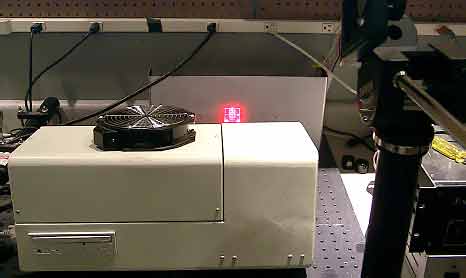![]()

This page
|
||
| T
|
hese tests are the most extensive comparison ever published of laser
show scanners. We ran the tests as part of our technical research, and
then decided to share the results with our clients and the industry at
large.
Of course, no testing
procedure can ever be perfect. That's why we suggest that ideally every
laserist or laser company should run their own side-by-side tests. Test setup |
|
| P |
angolin's tests were conducted with the scanners on a breadboard, scanning onto a test target 12 inches away. The test target is printed on paper taped at the top and bottom to a metal plate. The paper is a bit wavy, which can be seen in some of the photos where straight lines appear to curve. The waviness does not affect the angle measurements.
This setup is normally used by LSDI for scanner tuning. As it turns out, the short, 12-inch throw made it hard to photograph very small angles. If we re-ran the tests, we would use a much longer throw, to enlarge the test patterns relative to the beam width. Angle markings |
|
|
|
T |
he target is a sheet of graph paper pre-calibrated with angle markings
(not linear distance). Angle markings are absolute numbers, designed to
make it easy to read off angles when the scan is centered.
Photos |
|
|
P | hotographs were taken with a digital camera at a source resolution of 1536
x 1024 pixels. The photos have been edited to improve contrast, sharpen edges,
and reduce graininess for fast Web loading. Source photos can be around
300-400KB; after resizing and processing for the Web, JPEG versions of the
photos are about 10-20KB. Despite the processing, the content of the photos -- the actual appearance of the scanned images -- has not been altered. The original, unedited photos are available upon request from Pangolin. Please mail a Zip 100MB disk with a stamped, self-addressed return envelope or a FedEx or UPS return mailing label with return charged to your account. (If you do not provide pre-paid return envelopes, labels and postage, we will keep the Zip disk and use it for our own work!) Tunings and speeds |
|
|
T |
he Catweazle was tuned by Holo-Spectra.
The GSI G-120 and two CTI 6800s were tuned by Pangolin's William Benner.
The CTI 6210 was tuned by Cambridge. |

